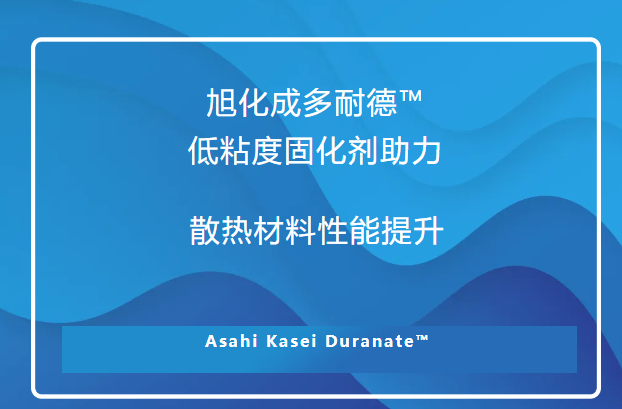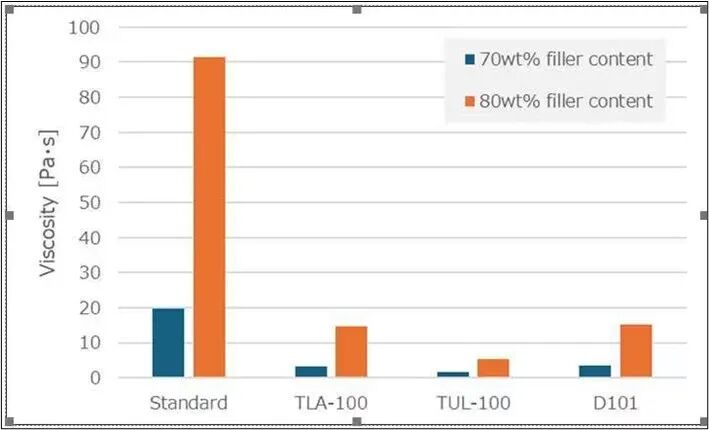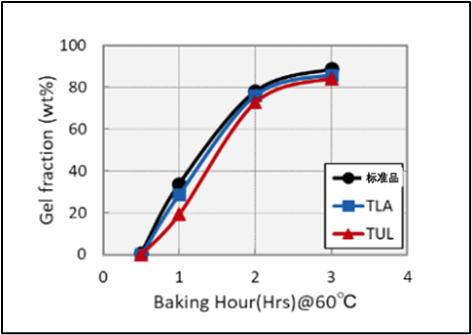Asahi kasei duraflex™: Low Viscosity Curing Agent Enhances Thermal Management Material Performance
Thermal issues, industry consensus
The rapid development of new energy vehicles, 5G communication devices, and AI servers has driven the miniaturization and high integration of electronic components.The resulting heat generation issue has become a core challenge restricting performance and lifespan.
Especially inGap filler thermal materialThe demand for high thermal conductivity in applications continues to increase, but the contradiction of "high filler leads to high viscosity and processing difficulties" always exists.How to maintain good fluidity while improving thermal conductivity.It has become a key issue in the thermal material industry.

01Core Advantages
Meeting multiple requirements of thermal conductivity, process compatibility, stability and reliability, and global compliance.
1High thermal conductivity efficiency"—— Relies on high loading of thermally conductive fillers, but can lead to an increase in system viscosity."
2Process Compatibility- Narrow components and complex structures place higher demands on material flowability.
3Long-term reliabilityThe material needs to have good flexibility to withstand vibration and thermal cycling.
Industry competition is gradually shifting from "Single thermal conductivity"towards"Comprehensive AdaptabilityEvolution.
02Asahi Kasei Solutions
DynaDrive™Low-viscosity HDI-based polyisocyanate curing agentWith its low viscosity technology, it provides a new solution for thermal materials:
HDI (Hexamethylene Diisocyanate) ==
[Polyisocyanurate Deron™]
Low viscosity grade (Viscosity representative value @25℃)
· Donide™ TLA-100 (500mPa·s)
·Duonade™ TUL-100 (300mPa·s)
- Donide™ D101 (500 mPa·s)
Low viscosity + High curability
Maintain curing performanceMeanwhile, significantly enhance under appropriate conditions. Liquidity。
Chart: Viscosity Comparison When Adding Thermal Interface Material

Figure: Curing Properties of Low Viscosity Grades (Evaluated in Combination with Commercially Available Acrylic Polyols)


Rich product lineup
Viscosity range coverage300–500 mPa·sMeeting different formulation needs.
03Application value
- New Energy Vehicles:Improving the cooling of power batteries and electronic control modules to enhance safety and lifespan.
・ 5G Communication:The high-frequency operation of base stations and antenna equipment ensures long-term stability.
・ AI Server:The thermal management requirements of high-performance computing chips ensure the efficient operation of data centers.
The competition in thermal materials is entering a new stage: it not only needs to conduct heat, but alsoBalancing craftsmanship, reliability, and compliance.。
Asahi Kasei's DURANEX™ series, withLow viscosityTo help overcome the dilemma of "high filler = high viscosity," it provides industry clients with options that combine performance and processability.
In the evolution of heat dissipation technology, material selection is crucial.
【Copyright and Disclaimer】The above information is collected and organized by PlastMatch. The copyright belongs to the original author. This article is reprinted for the purpose of providing more information, and it does not imply that PlastMatch endorses the views expressed in the article or guarantees its accuracy. If there are any errors in the source attribution or if your legitimate rights have been infringed, please contact us, and we will promptly correct or remove the content. If other media, websites, or individuals use the aforementioned content, they must clearly indicate the original source and origin of the work and assume legal responsibility on their own.
Most Popular
-

Dow, Wanhua, Huntsman Intensively Raise Prices! Who Controls the Global MDI Prices?
-

Clariant Unveils Cost-Cutting Plan Details, Plans to Shut Down Multiple Plants
-

[Today's Plastics Market] General Materials Weakly Fluctuate, Engineering Materials Steadily Rise
-

Daily Review: Polyethylene Prices Under Weak Consolidation, Sellers Face Significant Pressure to Move Inventory
-

EU Plans to Introduce New Rules Banning 100% Procurement of Chinese Products! Asahi Kasei and Teijin Reach Absorption Merger Agreement






